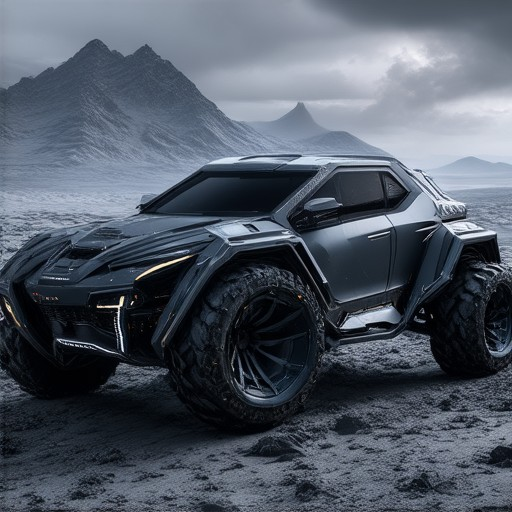When it comes to enhancing your vehicle’s performance on challenging terrains, few modifications are as impactful as upgrading to the best mud-terrain rim options. Whether you’re tackling rough trails, navigating muddy paths, or simply wanting to upgrade your ride’s aesthetic and functionality, selecting the right rims is crucial. In this comprehensive guide, we’ll explore everything you need to know about mud-terrain rims, including their benefits, considerations, and top picks for 2023. From understanding the differences between mud-terrain and all-terrain tires to learning how to pair your rims with the perfect tires, this article will provide you with all the insights needed to make an informed decision. Keep reading to discover how the right mud-terrain rim options can elevate your vehicle’s performance and versatility.
Key Takeaways
- Mud-Terrain Tires Provide Excellent Traction on Unpaved Surfaces
- Daily Driving with Mud Tires May Lack Comfort and Increase Noise
- Mud Tires Can Reduce Fuel Efficiency Due to Higher Rolling Resistance
- Using Mud Tires on Highways Can Pose Safety Risks
- All-Terrain Tires Might Be a Better Choice for Mixed Use

Disadvantages of Mud-Terrain Tires
- Reduced Comfort on Paved Surfaces: Mud-terrain tires are designed for off-road use, which means they can be quite uncomfortable on smooth roads due to their aggressive tread patterns.
- Limited Traction on Dry Surfaces: While they excel in mud, their deep treads may not provide optimal grip on dry or gravel surfaces, potentially leading to skidding or reduced control during acceleration or braking.
- Increased Wear and Tear: Their robust construction makes them prone to faster wear, especially on rough terrain or when used frequently on paved roads.
- Less Versatility: They are primarily suited for mud conditions, making them less effective on varied surfaces compared to all-terrain tires.
- Potential Higher Costs: Mud-terrain tires are often more expensive and may not be covered under standard warranties, adding to maintenance and replacement expenses.
- Availability Issues: These tires may not be readily available at all retailers, requiring special orders and potentially delaying replacements.
Do You Need Special Rims for All-Terrain Tires?
All-terrain tires are designed for off-road conditions, offering improved traction and durability compared to standard tires. However, whether you need special rims depends on several factors:
- Tire Size and Width: All-terrain tires typically have a larger diameter and tread width than regular tires. Ensuring these dimensions fit within your vehicle’s wheel arches is crucial. If your current rims don’t provide enough clearance, you may need to upgrade to wider rims to prevent tire deformation and maintain proper vehicle control.
- Vehicle Type: Vehicles with larger wheel wells, such as trucks and SUVs, often accommodate all-terrain tires without needing special rims. In contrast, smaller cars like sedans may require wider rims to fit the larger tires effectively.
- Suspension and Performance: While not always required, upgrading to stronger, wider rims can enhance stability and handling, especially when tackling rough terrain. Consult with a trusted mechanic or wheel specialist to determine the best fit for your vehicle’s suspension and braking systems.
Before installing all-terrain tires, always verify the recommended tire size for your vehicle and check if your current rims can handle the increased dimensions. If unsure, professional consultation is advisable to ensure optimal performance and safety on and off the road.

What Tire is Best for Mud?
- Nitto Graveguard G2
- Goodyear Wrangler Mud-Terrain
- BFGoodrich KO Mud-Terrain
- Cooper Discover Muddy mud tire
- Hankook AT-MaxX
A high-quality option for serious mud enthusiasts, offering excellent traction and durability in extreme conditions.
Known for its aggressive tread design, providing superior grip in mud and loose surfaces.
Renowned for its exceptional performance in deep mud and rough terrain, backed by years of proven reliability.
Excellent for handling tough mud conditions, with a design focused on maximizing traction and comfort.
A versatile mud tire that performs well in various weather conditions, combining strength and flexibility.
When choosing the best tire for mud, consider factors like tread depth, lug pattern, and rubber compound designed for maximum traction in wet and sloppy conditions. For optimal performance, check the tire’s size and vehicle compatibility to ensure safety and efficiency on the road.

Are Mud-Terrain Tires Good for Daily Driving?
Mud-terrain tires are specifically designed for off-road conditions, offering excellent traction on loose surfaces like mud, dirt, and gravel. However, their performance on paved roads can vary depending on several factors:
- Pros:
- Traction: Mud-terrain tires provide better grip on uneven surfaces compared to regular tires, which can be beneficial in adverse weather conditions.
- Durability: These tires are built to withstand rough terrain, making them a good option for drivers who frequently encounter rough roads or trails.
- Cons:
- Ride Comfort: Mud-terrain tires tend to be bumpy on smooth roads due to their aggressive tread design, leading to a less comfortable riding experience.
- Noise Levels: They can generate more road noise compared to regular tires, which may be annoying during long drives on highways.
- Handling: While they handle well on loose surfaces, their performance on paved roads may not match that of specialized touring or performance tires.
If you’re considering mud-terrain tires for daily driving, weigh these factors against your specific needs. They are generally recommended for drivers who frequently travel on unpaved paths or require heavy-duty tires for off-road adventures. However, for typical daily commutes or highway driving, you might want to opt for a tire designed specifically for those conditions.
For more information on selecting the right tires for your vehicle, check out our Tire Guide .
Do Mud Tires Get Worse Gas Mileage?
Mud tires are designed for off-road performance, offering superior traction and protection against obstacles like rocks and mud. However, this specialized design does come with a trade-off: they can negatively impact fuel efficiency compared to regular tires. Here’s why:
- Increased Rolling Resistance : Mud tires have deeper treads and more aggressive patterns, which increase the tire’s contact patch with the ground. This leads to higher rolling resistance, causing your engine to work harder and consume more fuel.
- Weight Contribution : Mud tires are typically heavier than their street counterparts. The added weight of the tire itself contributes to reduced fuel efficiency, as more energy is required to move the vehicle forward.
- Tire Wear : While mud tires are built to handle tough conditions, they wear out faster than standard tires. This wear can lead to further losses in fuel efficiency as the tires become less efficient over time.
To mitigate these effects, consider the following tips:- Adopt a More Efficient Driving Style : Avoid rapid acceleration and deceleration, as this increases fuel consumption. Maintain a steady speed when possible.- Keep Tire Pressure Optimized : Proper inflation ensures your tires are working as efficiently as possible.- Use Efficient Tires for Highway Use : If you frequently drive on highways, consider switching to a more fuel-efficient tire design.
For the best balance between performance and efficiency, many drivers opt for all-terrain tires, which offer a compromise between mud capability and better fuel economy than pure mud tires. These tires are designed to handle a wider range of surfaces without sacrificing too much efficiency.
If you’re looking for a reliable source of information on tire choices and automotive upgrades, visit our blog for detailed guides and reviews. We also recommend checking out our shop for high-quality mud tires and other automotive accessories.

Are Mud Tires Okay on a Highway?
Mud tires are primarily designed for off-road conditions, such as navigating through muddy trails or rough terrain. While they may be legally permissible on highways, they are not ideal for daily use on paved roads. Here are the reasons:
- Tread Design : Mud tires feature deep treads meant for maximum traction in loose or uneven surfaces. On smooth highways, this can lead to poor grip, increased risk of skidding, and uneven wear.
- Width and Weight : These tires are typically wider and heavier, which can affect handling and fuel efficiency. They may also make it harder to maneuver on highways compared to standard tires.
- Performance Issues : Using mud tires on highways can result in reduced braking performance and less stability, increasing the risk of accidents.
- Legal Considerations : Some jurisdictions may have regulations against using mud tires on highways due to their potential impact on road safety.
Therefore, it is advisable to use regular tires specifically designed for highway use to ensure optimal performance, safety, and compliance with local laws.




0 Comments